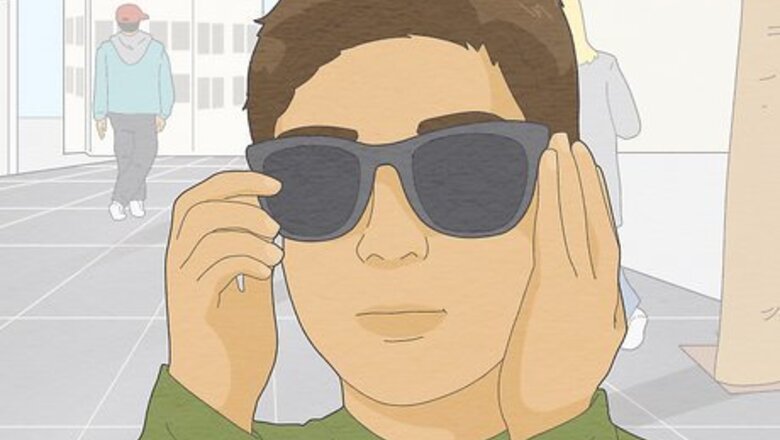
views
X
Trustworthy Source
PubMed Central
Journal archive from the U.S. National Institutes of Health
Go to source
No matter what sensory overload looks like for you, we’re here to help. We know how tough it can be to desensitize yourself (or your child), which is why we’ve put together this guide of coping techniques, prevention, signs, and causes of sensory overload. Read on to learn how to use these tools to manage your discomfort so you can feel better.
- Depending on your needs, sensory overload can be reduced by closing your eyes, reducing noise, and/or removing physical sensations.
- Sensory overload can cause irritability, anxiety, restlessness, discomfort, and stress.
- Sensory overload occurs when your 5 senses try to process too much information at once.
How to Cope with & Prevent Sensory Overload
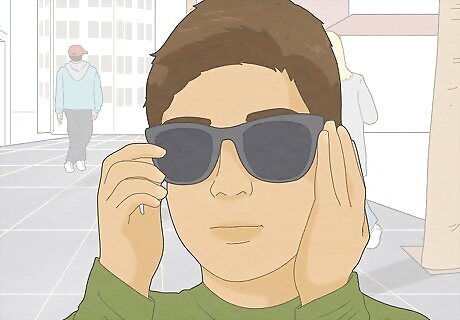
Tone down lightsBright, flashing, or colored lights can make your brain work overtime. If you’re experiencing sensory overload, wear sunglasses to block out harsh lights, turn off the TV, or dim the lights in the room. This way, you can focus on other things aside from visual stimuli. If you get visually overwhelmed easily, opt for using lamps instead of ceiling lights and getting black-out curtains to block out the sun at any time of day.

Lower noise levelsLoud, consistent sounds can make you feel stressed and overwhelmed. For some, background noise can be very annoying and stressful, causing them to experience sensory overload. To help with noise overstimulation, turn off any music playing in the room and shut windows and doors. The quieter the room, the easier it’ll be to recharge and destress. If you work or visit loud environments frequently, consider investing in noise-canceling headphones to help drown out unwanted noise and avoid sensory overload. Sometimes, conversations can be noise-stimulating. Limit your conversations to simple “yes” or “no” answers, respond with a thumbs up or down, or ask if they wouldn’t mind talking at a later time.
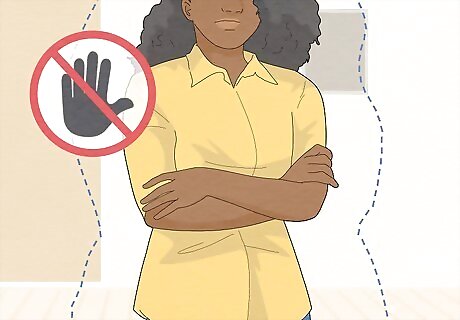
Reduce physical touchPhysical interactions or sensations can cause sensory overload. Tactile overload is common when you’re feeling overwhelmed by your environment. You may be stressed by a hug in a crowded place or the feeling of your shirt’s tag rubbing against your neck. If something touching your body is making you uncomfortable, do your best to remove it or yourself from the situation. Many people with sensory processing issues are hypersensitive to touch, and being touched or thinking they are about to be touched can worsen the overload. Stand away from others or leave crowded rooms to remove yourself from tactile situations. Focus on wearing or buying clothes that are comfortable for you (or your little one). Some people are more averse to certain textures and fabrics—that’s okay!
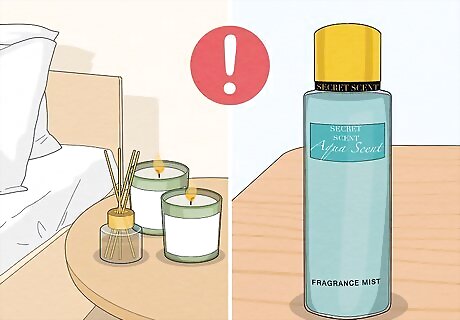
Limit strong smellsSome fragrances and smells can be overwhelming to your senses. When you feel anxious or stressed in your environment, smells could make you feel worse. Unlike visual stimulants, you, unfortunately, can’t “turn off” your nose (unless you physically plug your nose). So, avoid spraying perfumes, room sprays, or lighting fragrant candles. Opt for unscented cleansers, detergents, and cleaning products instead to lessen the number of smells in your environment. Try making your own soap and crafting candles to personalize just how much fragrance is in your household items. If you’re out and about, remove yourself (or your little one) from spaces with strong, lingering smells you find triggering. This is an easy way to reduce sensory overload and keep yourself at ease. If you’re in a space you can’t leave (such as an elevator), distract yourself with other senses. Rub your finger along the hem of your shirt, or memorize what your shoes look like.
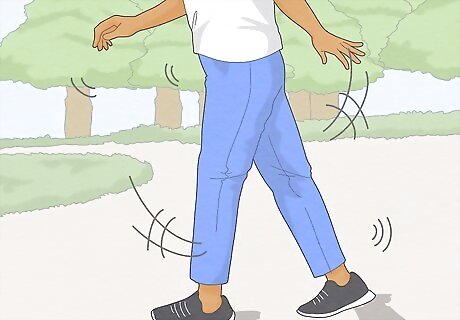
Close your eyes Something as simple as shutting your eyes can block sensory input. Along with light, movement can be very stimulating, even if you’re not physically doing the movement yourself. This is called vestibular input. Watching TV or people walking down the street can leave you feeling overwhelmed by your environment. To reduce this overload, stay still, lay down, and close your eyes. Similarly, carefully move between laying down and upright positions when experiencing sensory overload to keep your body nice and calm.

Create a calm home environmentHaving a sensory-safe place can help you feel less overwhelmed. The world will always be stimulating—you can’t control that! But you can control your own environment. Build a space in your bedroom or home that’s calming and relaxing. This way, you can retreat to your safe space and recharge after a sensory-stimulating day. Consider adding these things to your space to make it sensory-friendly: Black-out curtains Dimmable lights Bubble tubes Oil diffuser Glow-in-the-dark ceiling stars Foam floor mats Indoor swing Bean bag chair Weighted blanket

Take a sensory breakDon’t hesitate to remove yourself from stimulating situations. Feeling overwhelmed in large groups of people or busy environments is normal. Sometimes these situations are unavoidable, and while you may not be able to fully escape them, you can take a break to recover from overload. So, use your lunch break to relax in your car alone or slip into the bathroom during a school assembly. Taking even the quickest break can help you recharge and feel like yourself again. Avoid “toughing out” a sensory overload, as this can worsen your symptoms and make them harder to manage. If you respond to your needs early on, they’ll be easier to handle. Make excuses like, “I need to use the restroom,” “I need some air,” or “I need some alone time” if you’re in a public setting and need a quick sensory break. Do your best to preplan for events you know may be triggering. Create a plan for where and when to take sensory breaks to feel more at ease.
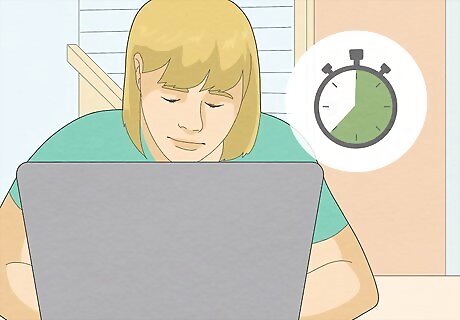
Set sensory limits for yourself Establishing boundaries can help you feel better in the long run. If you know you get easily overwhelmed in certain situations, be proactive and limit how long you’re in those situations. Develop a routine that works with your sensory needs rather than against them. For instance, aim to only play video games for an hour if you know the visual stimuli make you anxious, or go shopping during a store’s less busy hours if you get overwhelmed around large groups of people. If you’re a caregiver or parent, monitor when your child gets overwhelmed. Then, limit their activity with that particular stimulus to help reduce sensory overload.

Try stress-coping techniques Reducing stress can help you avoid overstimulation. While you can’t always control your environment, you can control how you react to it. Stress-relieving techniques are an excellent way to reduce sensory overload in the moment and feel comfortable in your surroundings. Don’t worry if you look “weird” doing these in public—focus on what you need to do to feel better. Practice yoga daily to connect your mind, body, and spirit to more calming energy. Try meditating to find peace in any environment. Use deep breathing techniques to relax your body when you feel overwhelmed or stressed.

Try occupational therapy If you need extra support, consider seeing a therapist for help. There’s nothing wrong with asking for a little help, especially when it comes to your (or your child’s) mental health! Occupational therapy is a great resource for adults and kids. These therapists can help reduce your sensory sensitivities and provide personalized advice and coping skills to match your needs. Find an occupational therapist in your area by searching “occupational therapy near me” online.
Signs of Sensory Overload
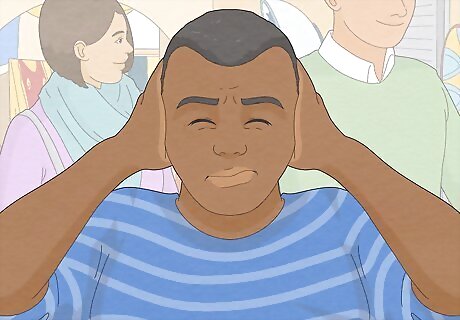
Sensory overload can cause anxiety, irritability, stress, and sensitivity. Sensory overload can differ for everyone, and you may or may not experience all or some of these symptoms. If your senses are overwhelmed, you might: Feel a strong urge to cover your eyes or ears. Have trouble focusing. Be extremely irritable. Be restless or uncomfortable. Feel overly excited or hyper. Be stressed, fearful, or anxious.
Causes of Sensory Overload
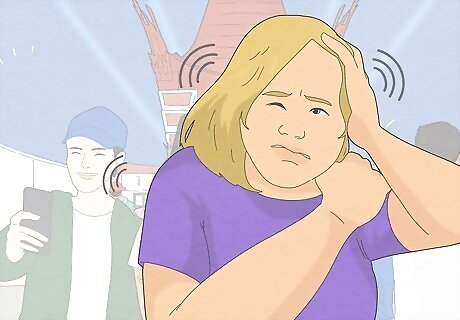
Sensory overload happens when too much occurs in one place at one time. Strong smells, loud music, sudden temperature changes, and unwanted physical contact can all trigger sensory overload. For instance, say you’re at a party with flashing lights, booming music, and dancing people. This can cause you to feel overwhelmed and stressed because there are too many stimuli happening at once. Think of sensory overload like having too many computer tabs open. If you have too many tabs open at once, the computer can freeze up or slow down. A sensory overload behaves the same way. If too many things happen in an environment at once, you can shut down and become overwhelmed. Sensory overload can happen anywhere: at school, work, or the grocery store. People with autism, anxiety, sensory processing disorder (SPD), and PTSD are more likely to feel sensory overload because they're more sensitive to their environments.




















Comments
0 comment